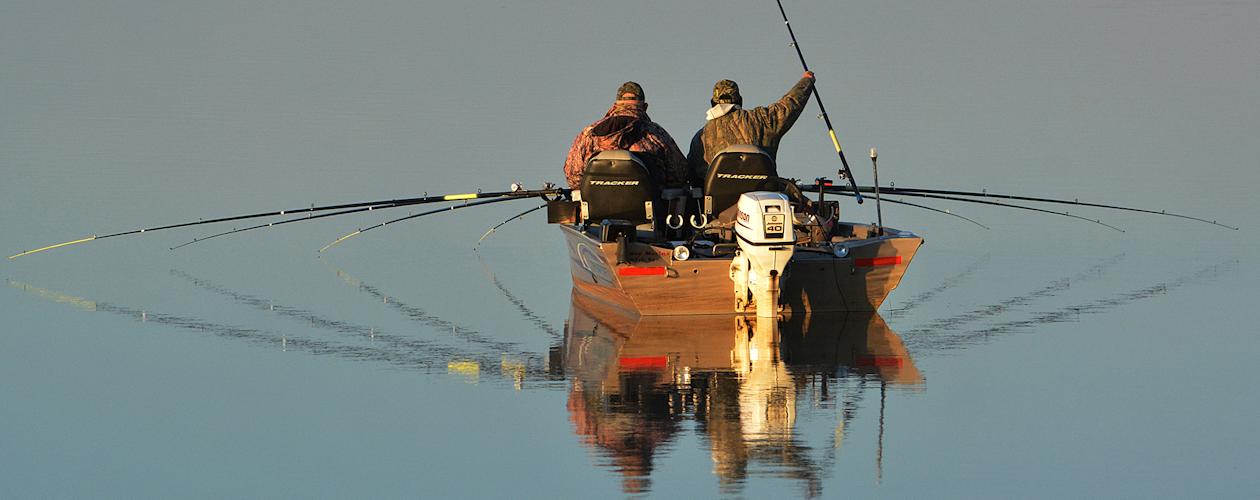TVA Implements Annual Drawdown on Kentucky Lake
Written by Steve McCadams - Published on July 6, 2022
Lake levels have begun falling slowly this week as it’s time for Tennessee Valley Authority’s annual drawdown to begin on Kentucky Lake.
Each year the reservoir achieves summer pool elevation of 359 (feet above sea level) on or around May 1, which is the agency’s target date. Then, just after the Fourth of July holiday period TVA implements its curve for a slow but gradual drawdown toward winter pool (354) with a target time in the mid-November range.
TVA lakes are lowered to create storage capacity. TVA’s priorities are flood control, hydro power and navigation but recreational use has been a huge benefit over the years and a byproduct one might say.
Recreational boaters, anglers, lakefront property owners and all lake users will start to notice lower lake levels in the days, weeks and months ahead. Some of the more obvious observations will be receding shoreline lake levels and those at launch ramps.
There’s still ample water for most lakers but once Labor Day comes and goes it begins to take on a different look up and down the waterway. That’s when lower lake levels take on a whole new meaning for backwater bays and main lake sandbars where shallow flats begin to alter the path and shortcuts for all boaters.
As fall approaches it’s a different lake out there. Most fishermen and pleasure boaters have learned to adjust to the drawdown schedules of TVA, which have been in place since the reservoir was impounded back in the mid 1940’s.
Several reservoirs throughout the TVA valley are under a winter drawdown schedule, although it varies dramatically from one reservoir to another. Kentucky Lake’s drawdown is five feet from summer pool to winter pool.
Some of the lakes in east Tennessee have drastic changes—some more than twenty feet--- in their elevation from peak summer pool levels to their low ebb of winter pool.
How well the system is balanced is determined by measurements taken at Chickamauga Dam near Chattanooga, Tenn.—the location that provides the best indication of water flow in the upper Tennessee River system, says TVA’s website.
If the volume of water flowing into Chickamauga Reservoir is less than needed to meet systemwide flow requirements, additional water must be released from upstream reservoirs—even during summer months.
Depending on the time period and water volume, 10 tributary reservoirs are considered for water release to improve overall system flow, resulting in a slight drawdown.
When dry conditions prevail on the Tennessee River below Chickamauga Dam, it may be necessary to release additional water to meet requirements at Kentucky Dam at the end of the system.
Water may also be released from reservoirs during summer months after significant storm events to ensure adequate flood storage capacity.
Meanwhile, as to the summer fishing scene along Kentucky Lake anglers are keeping a sharp eye on the status of current these days. Anglers, especially those targeting bass and catfish, yearn for a little flow as it helps stimulate the bite.
Hot summer days are seeing surface temperatures reach the 86 to 89 degree range as of late. Most anglers rise and shine early in hopes of beating the heat as best they can. By midday it’s a grudge match out there!
A few bass fishermen have been turning to night fishing the last few weeks, dodging the hot sun in favor of a night bite as they toss everything from Texas rigged worms or hair jigs to slow rolling a big bladed spinnerbait around rap-rap shorelines or out over sloping sandbars near deep water.
A few smallmouth have been taken by night fishermen too. It’s another world out there under the cover of darkness but over the years clear water conditions plus the heat factor have steered more and more bass fishermen toward the night bite.
Some crappie anglers use floating lights at night as they too have attempted to adjust to summer fishing conditions. Anchoring or holding their position out over main lake drop-offs where some submerged structure lies below can often pay dividends.
Attracting the schools of shad is usually the key. The lights draw the schools of baitfish and usually crappie, white bass and yellow bass are hot on their trail as they follow their forage.
When mayfly hatches occur it sometimes increases the bite, especially for white bass. And the current is an asset too.
As to daytime fishing a few boaters are finding crappie still biting around deep structure. Depths of 15 to 20 feet have been giving up a few fish as anglers tightline jigs and live minnow presentations.
The catfish bite has been hit and miss lately. Seems whenever the current is moving the bite is decent; without moving water the scenario is stagnant.
Moving water adds life to the main channel areas and stimulates plankton movement which creates activity throughout the food chain. The more the balls of baitfish move around the better the bite for just about all species.
Meanwhile, mayfly hatches continue to show up from time to time along river island rims and shorelines. That always helps the bluegill and bass bite this time of year.
Hot weather has been calling the shots now for several weeks but wise are the anglers who hit the water at daybreak---or challenge the darkness---and yield to the heat factor at midmorning by tossing in the towel.
< Return to the Archives
< Return to Fishing Reports
< Return to Fishing Overview








